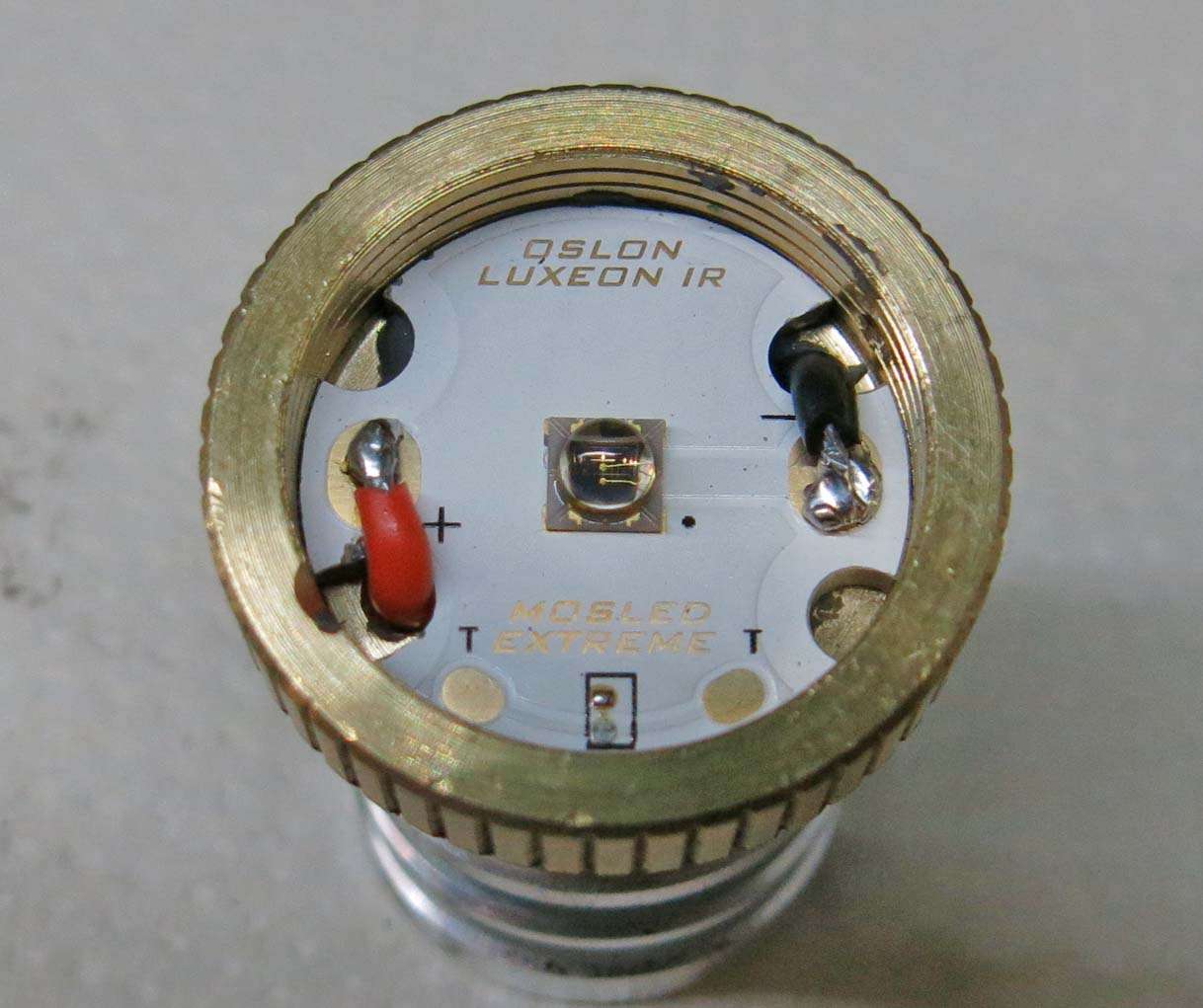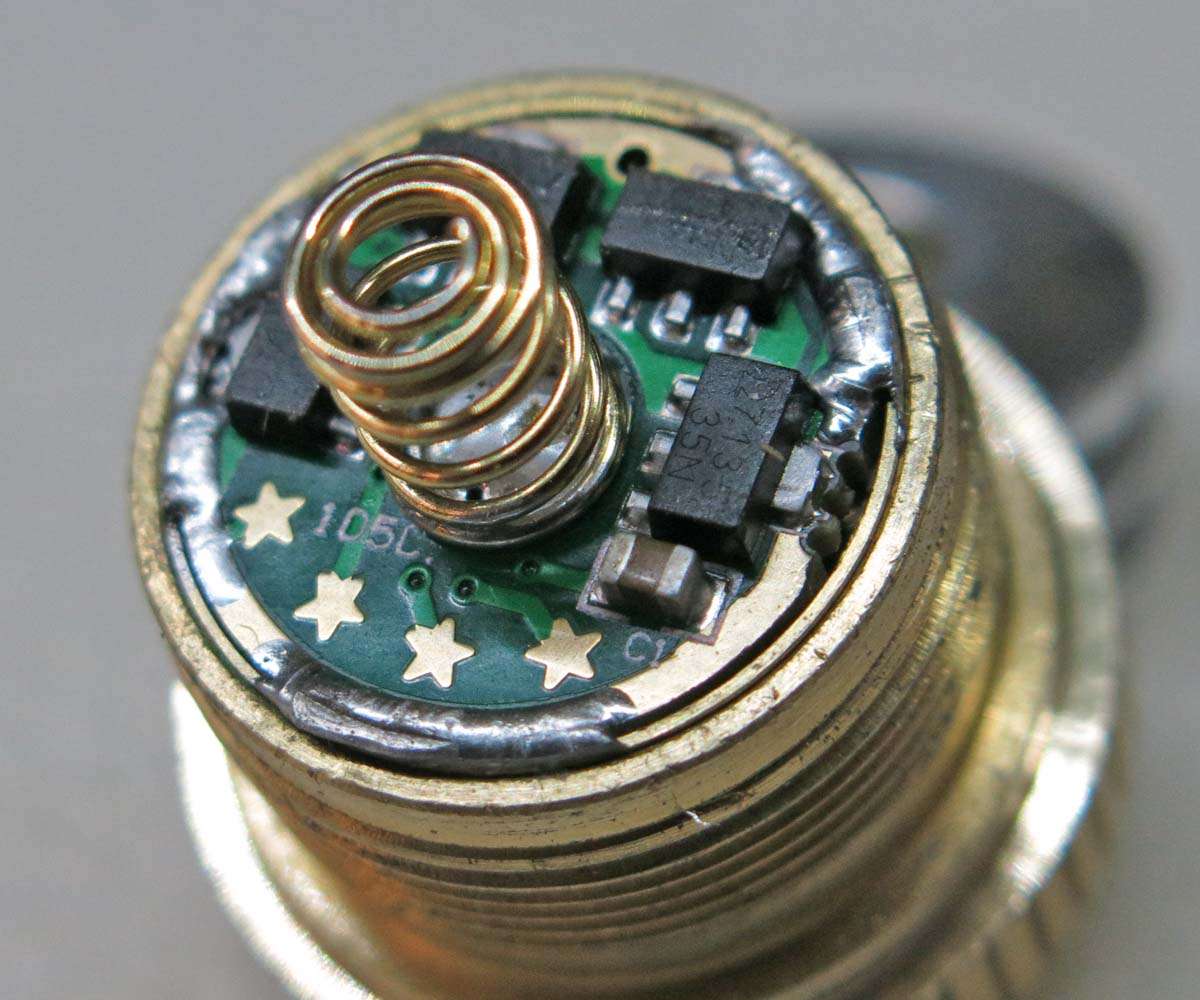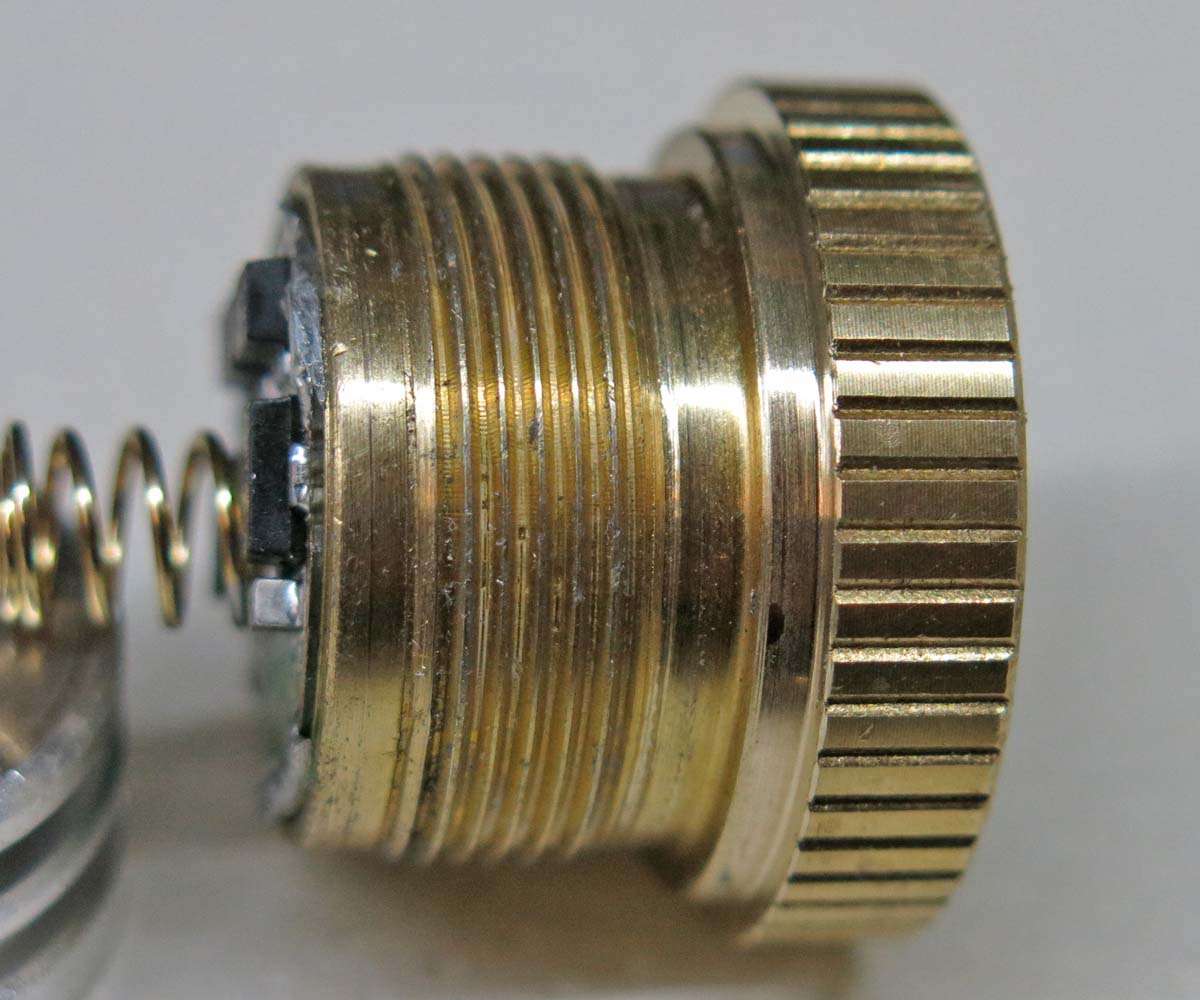On BLF there are tests available for pretty much every white LED and even some UV/color LEDs, but I didn't see someone actually test IR LEDs, so I did short test of relative output and forward voltage of OSRAM SFH 4715AS.
I used standard 1010 luxmeter which isn't the best choice for measuring IR LEDs, but if it's close enough to LED,it's able to detect IR light just fine. I can't measure absolute light output in mW with this luxmeter and method, only relative output (actual mW output vs. current still can be calculated from datasheet), but this is still very useful to see the limits of this LED.
Forward voltage was measured with 4-wire Kelvin method, to eliminate errors due to wires voltage drop.
I used two LEDs on two different MCPCBs; first one is non-DTP XP copper MCPCB mostly used for this LED among flashlight modders because it showed best performance:
OSRAM LED has footprint that's different form XP, but it still fits OK. Because ORSAM LED has thermal pad that is not electrically neutral, isolated MCPCB must be used.
Second MCPCB is mosX (short for MOSLED EXTREME), an aluminum board with thin ceramic (chemically grown aluminum oxide) as insulator:
https://led4power.com/product/mosled-extreme-mosx-ceramic-insulation-osram-oslon-mcpcb-20mm/
Footprint matches OSRAM LED footprint.

Test results are in table:

Lux values for second LED are scaled/corrected so that lux values are identical at low currents for both LEDs, this helps with comparing LEDs at higher currents. Correction factor is calculated from measurements at 0.4A and 0.6A.
Form test results it's visible that up to ~1A there is little difference in light output, but after that much lower thermal resistance of mosX board causes lower temperature rise of LED die and output declines slower compared to LED on Cu XP MCPCB. At 2.8Amps LED on mosX has ~15% higher light output compared to LED on Cu MCPCB.
2.8Amps is close to max. safe current for SFH 4715AS, both LEDs survived, but long-term LED reliability is not known.
What's interesting is that performance difference between two boards is quite visible for LED that has very large thermal resistance of 9 C/W, both boards have fraction of that, but when LED die reaches high temperature, it seems every additional C has significant negative impact on light output.
____________________________________________________________________________________________________________________________________________________________________________
Edit: 11.06.2018. Luxeon IR vs OSRAM SFH4715AS test
I finally tested Luxeon IR LED, specifically L1I0-0850090000000. Specifications look very similar to SFH4715AS, same typ. output, footprint is completely the same, biggest difference is much lower thermal resistance - 2.5K/W, OSRAM SFH4715AS has 9K/W. This should mean slower output decline at higher power due to lower chip temperature increase.
LUXEON IR is available with three different lenses, 60,90 and 150 degrees. 150deg version could be useful for reflector an TIR applications, while 60 and 90deg are more useful for lens lights.
I tested 90deg, because 4715AS is also 90 deg, but lens on Luxeon IR is quite bigger, and radiation patterns are not the same, so I used correction factor to match relative output (assumption is that radiation outputs are the same, as datasheets say).
Here are test results for OSRAM SFH4715AS vs. LUXEON IR on mosX (lux numbers for Luxeon IR are scaled to match OSRAM at low currents, where difference in thermal resistance has negligible effect on output):

I tested OSRAM up to 4,0A this time, so both LEDs can handle impressive amount of current without failure. Also after 4,0A test, I checked lux numbers at lower currents again, to see if there is damage due to high current, and both LEDs had same lux numbers as before 4,0Amps, so there is no short term damage from high current,at least not on mosX board.
Form test results it's visible that up to ~1.4A there is little difference in light output, but after that much lower thermal resistance of Luxeon IR board causes lower temperature rise of LED die and output declines slower compared to SFH4175AS.
This test confirm that 2.8Amps is close to max. safe current for SFH 4715AS, over that there is almost no gain, and output even starts to decline over 3,20Amp.
Luxeon IR has higher relative output over 1,40Amps, difference is about ~7% at 2,80Amps, and ~11% at 3,40Amps. Also Luxeon IR has considerably lower forward voltage over 2,0Amps.



